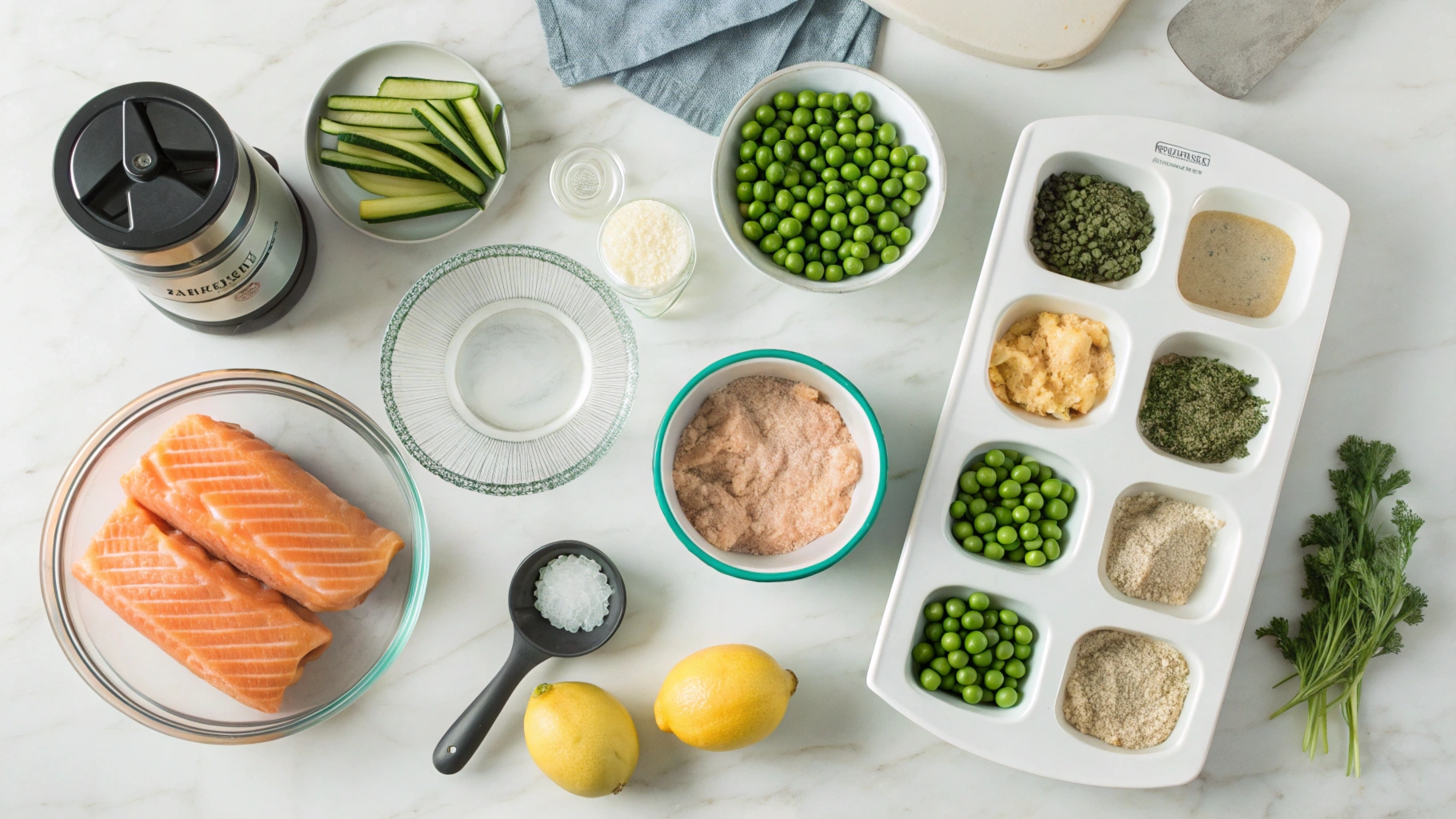I never thought making my own fish food could change so much. Buying commercial food for years made my fish look dull. But then, I found homemade fish food recipes.
Creating your own fish food is more than a hobby. It’s a way to make your fish healthier and more vibrant. You can make a meal that’s fresh, nutritious, and just right for your fish. No more bad ingredients or preservatives.
Good nutrition for fish is more than just buying food from the store. Homemade food lets you pick every ingredient. This means your fish get the best nutrition, no matter if they eat plants, meat, or both.
In this guide, you’ll learn to make meals from simple ingredients. These meals will make your fish happy and healthy. Get ready to make your fish’s home better with homemade food.
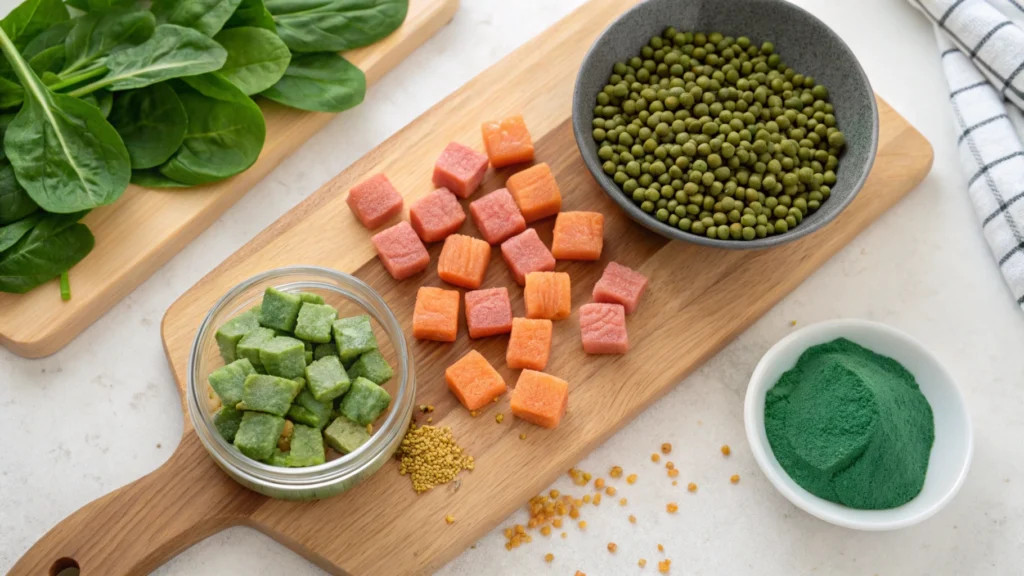
Understanding Essential Nutrients for Aquarium Fish
Creating the right diet for your fish is key. You need to know about fish pellet ingredients and what fish need to eat. It’s not just about feeding them; it’s about giving them a diet that keeps them healthy and full of energy.
Nutrition is vital for your fish’s health. Each fish species has its own food needs. You must think about these needs when choosing their food.
Protein Requirements for Different Fish Species
Protein is a must in fish food. The type of diet fish need varies by species:
- Carnivorous fish need lots of protein from animal sources
- Herbivorous fish do well on plant-based foods
- Omnivorous fish need a mix of protein and plants
Vital Vitamins and Minerals
A good fish diet includes important nutrients. Key vitamins for fish are:
| Vitamin Group | Primary Function |
|---|---|
| B-Complex Vitamins | Helps with metabolism and energy |
| Vitamin A | Good for vision and the immune system |
| Vitamin C | Boosts the immune system and helps with stress |
| Vitamin D3 | Important for calcium and bone health |
Importance of Balanced Nutrition
A balanced diet is key to keeping fish healthy. It prevents health problems and helps fish grow strong.
“A balanced diet is the foundation of aquatic health and longevity.” – Marine Nutrition Expert
Feeding schedules are important. Experts say to feed fish at least twice a day. Use small amounts so they can eat it all in 2-3 minutes. This stops overfeeding and keeps the water clean.
Benefits of Creating Your Own Fish Food Recipe
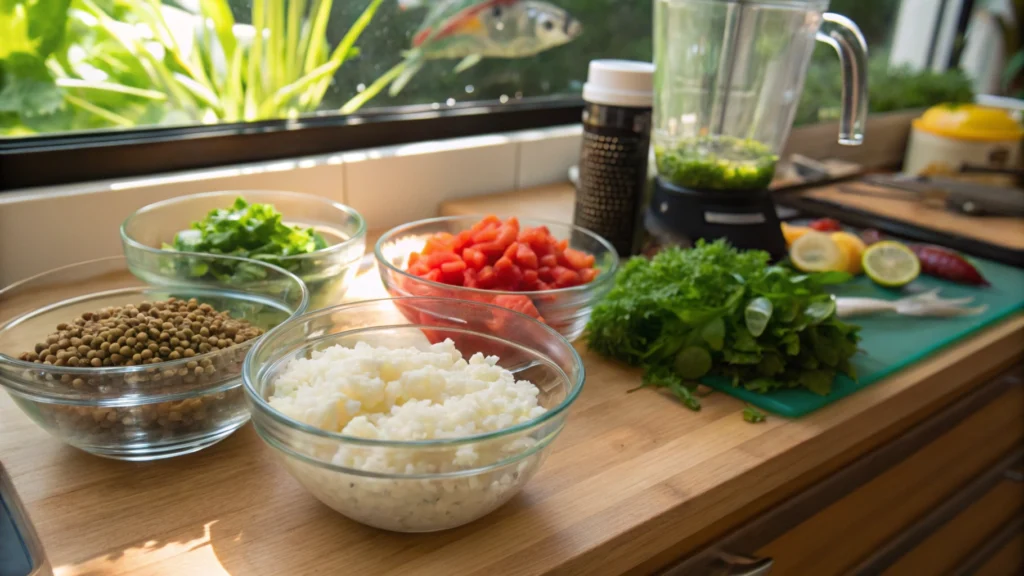
Starting to make your own fish food is a big step in caring for your fish. It lets you control what they eat, making sure they get the best nutrition.
There are many good reasons to make your own fish food:
- Total ingredient control and transparency
- Elimination of harmful preservatives and additives
- Customization for specific fish species’ dietary needs
- Potential cost savings for aquarium enthusiasts
“Fresh, nutrient-dense food can transform your fish’s health and vitality.” – Aquarium Nutrition Expert
When you make your own fish food, you can tailor it to your fish’s needs. Studies show that fish eating homemade food often look better, have more energy, and are healthier.
- More vibrant colors
- Increased energy levels
- Improved overall health
- Enhanced immune system function
Another big plus is saving money. Buying ingredients in bulk and making lots at once can cut down on feeding costs. You get better nutrition for less money.
| Food Type | Cost Comparison | Nutritional Value |
|---|---|---|
| Commercial Fish Food | Higher per serving | Standard nutrition |
| Homemade Fish Food | Lower per serving | Customized, high-quality nutrition |
Knowing what’s best for your fish starts with knowing their needs. Whether they eat plants, meat, or both, making food just for them can greatly improve their health and life span.
Essential Ingredients and Equipment for Success
Making your own fish food needs the right ingredients and tools. Knowing what your fish need is key. This helps you make fish food recipes that keep them healthy.
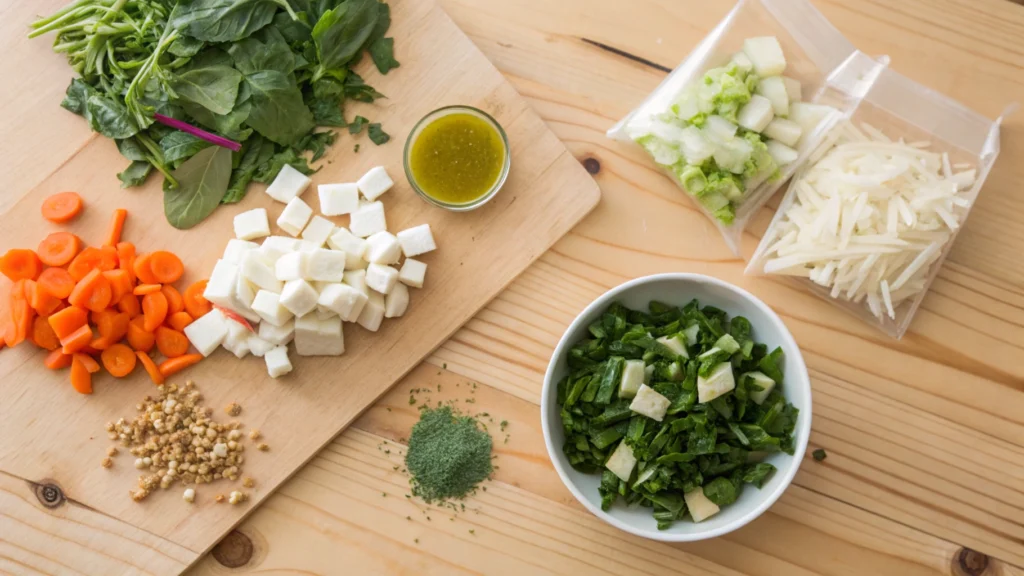
High-Quality Protein Sources
Protein is vital for homemade fish food. Your fish need different proteins to stay healthy. Here are some top choices:
- Fresh fish meal
- Squid meal
- Shrimp meal
- Canned salmon
- Lean chicken
- Beef
- Organ meats
Plant-Based Components
Plant-based foods add important vitamins and minerals. They’re key for a balanced diet.
- Spirulina algae
- Chlorella
- Spinach
- Peas
- Zucchini
Required Tools and Materials
You’ll need special tools to make homemade fish feed. This ensures it’s of high quality and consistent.
| Equipment | Purpose |
|---|---|
| Food processor | Mixing ingredients |
| Blender | Creating smooth mixtures |
| Molds or trays | Shaping fish food |
| Dehydrator/Oven | Drying food pellets |
| Airtight containers | Storing homemade fish food |
“The key to successful homemade fish food is understanding your specific fish species’ nutritional needs.”
Simple Fish Food Recipe for Beginners
Making your own fish food is a fun way to feed your aquatic pets. It’s great for tropical fish or anyone wanting better nutrition for their pets. This easy recipe is perfect for beginners.
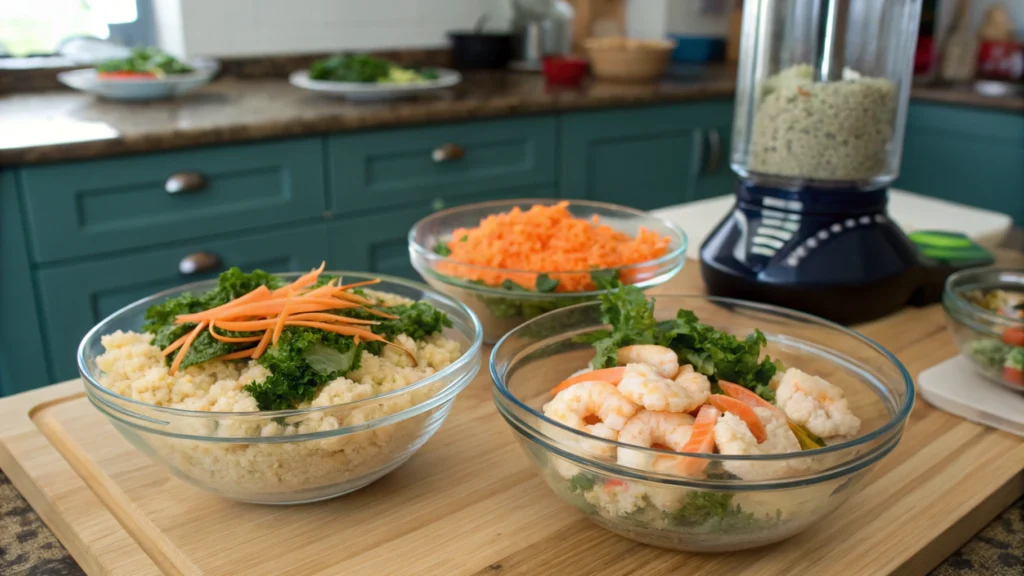
To make a nutritious meal for tropical fish, you’ll need a few things:
- 16 ounces of high-quality protein source (canned salmon or white fish)
- 1-2 ounces of powdered algae
- 1.5 ounces of unflavored gelatin
- Optional supplements for specific nutritional needs
Here’s how to make your homemade fish food:
- Mix protein and algae well in a big bowl
- Dissolve gelatin in warm water
- Combine all ingredients until they’re well-blended
- Spread the mix thinly on a baking sheet
- Refrigerate until it’s firm
- Cut it into small cubes or strips
“Homemade fish food allows you to control exactly what goes into your aquarium’s diet” – Aquarium Nutrition Expert
Nutritional Profile of Homemade Fish Food:
| Nutrient | Percentage |
|---|---|
| Crude Protein | 55-56% |
| Crude Fat | 10-15% |
| Crude Fiber | 5-8% |
Pro tip: Store your homemade fish food in airtight containers in the freezer. Thaw only the amount you need for each feeding to maintain nutritional quality.
This simple recipe gives your fish a healthy meal. It’s also cheaper than buying commercial food.
FAQs
What are the main benefits of making homemade fish food?
Making your own fish food has many perks. You get to choose what goes into it, avoiding bad additives. It’s also cheaper and lets you tailor the diet for your fish. This can lead to healthier fish, brighter colors, and more energy.
How do protein requirements differ for various fish species?
Different fish need different diets. Carnivorous fish need lots of protein, over 55%, from fish or shrimp. Herbivorous fish eat plants, while omnivorous fish get a mix of both.
What key ingredients should I include in homemade fish food?
You’ll need good protein sources like canned salmon or shrimp. Add plants like spirulina and spinach. Use gelatin or agar-agar to hold it together. The exact mix depends on your fish’s needs.
How long can homemade fish food be stored?
Homemade fish food can last months if frozen right. Keep it in airtight containers. Only thaw what you need to avoid waste and keep it fresh.
Is making homemade fish food complicated?
No, it’s easy! Start with a simple recipe using salmon, algae powder, and gelatin. With a food processor and some basic skills, you can make healthy food for your fish.
What equipment do I need to make homemade fish food?
You’ll need a food processor, bowls, and molds. A fridge or dehydrator helps with storage. A digital scale is optional for precise measurements.
Can I customize the fish food for different types of fish?
Yes! Homemade fish food is very flexible. You can change the protein levels and add special ingredients. This is great for tropical, freshwater, or marine fish.
How often should I feed my fish homemade food?
Feed your fish small amounts 2-3 times a day. The exact schedule depends on their type, age, and size. Watch how they react and adjust as needed.
Conclusion
Making your own fish food changes how you feed your aquarium fish. You learn what your fish need to stay healthy. This lets you create a special diet for them.
Choosing the right ingredients is key. They give your fish the nutrients they need to grow strong. This is the heart of feeding your fish well.
By making your own fish food, you control what your fish eat. Different fish need different foods. You can make meals just for them.
Try using different proteins and adding spirulina powder. Learning how much to feed is also important. This helps keep your fish healthy and happy.
Starting to make your own fish food takes some work. But it’s worth it. You’ll save money and give your fish a better diet.
This diet can boost their immune system and make them look more vibrant. Just remember to store the food right. Also, introduce new recipes slowly so your fish can get used to them.
